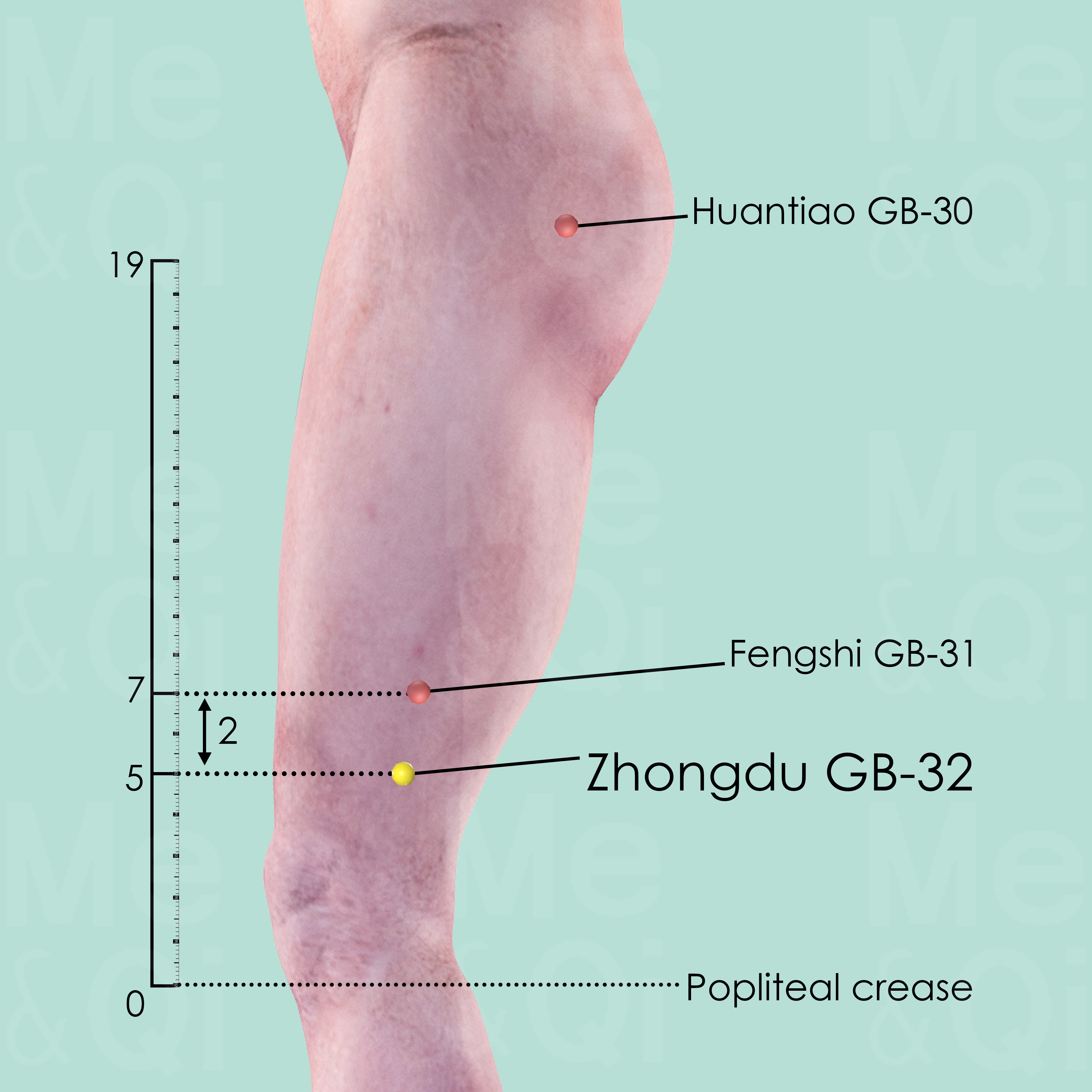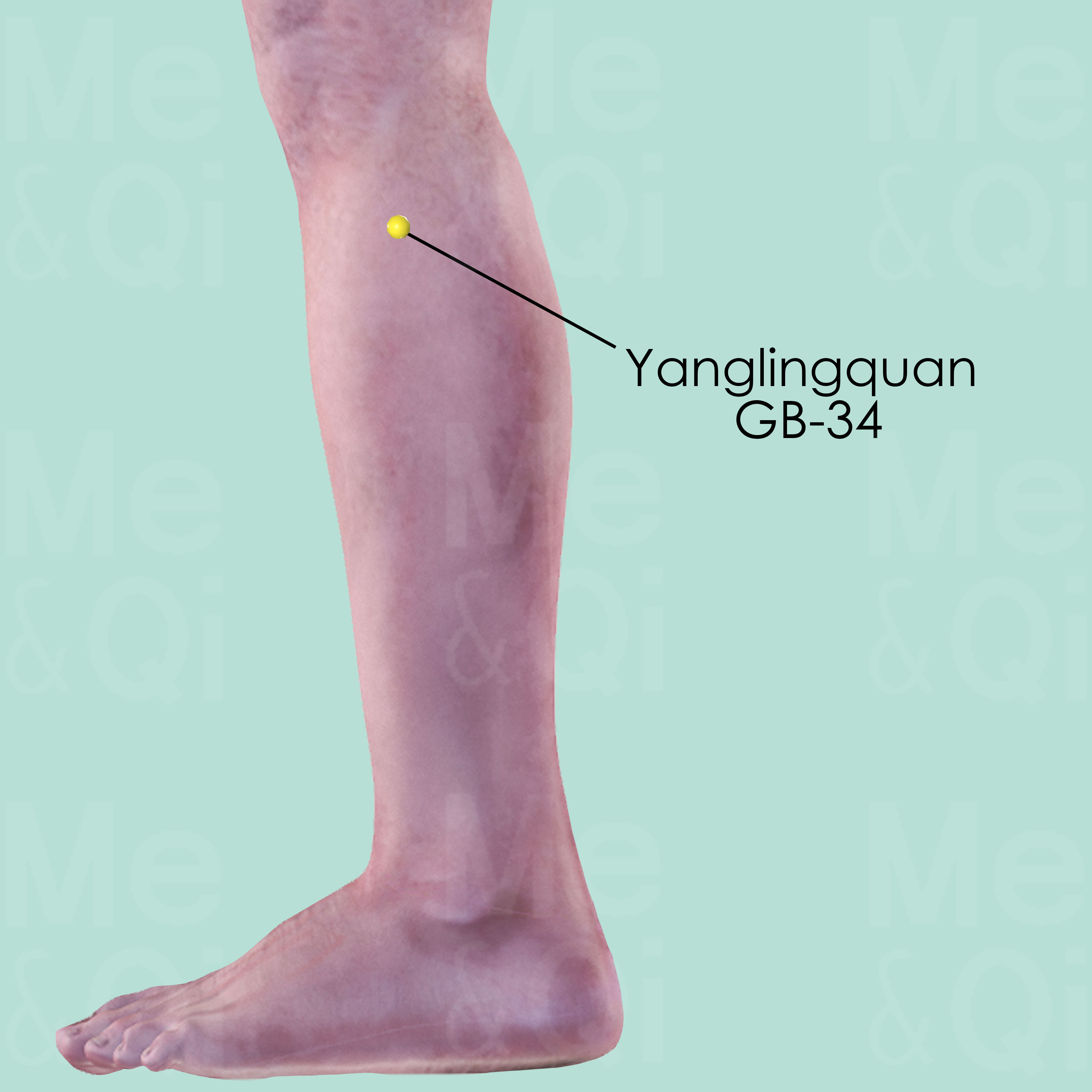Hip Painaccording to TCM
Symptom family: Joint Pain and Discomfort
What is Hip Pain?
Hip pain, a symptom experienced by many, can be particularly debilitating. This discomfort may emanate from the joint itself or from the surrounding structures. The pain could present as a persistent ache, a sharp stabbing sensation during movement, or a throbbing pain that worsens at night.
Its occurrence can greatly restrict mobility and interfere with daily tasks, making it a significant issue for those affected. A thorough understanding of its origin is crucial for effective management and alleviation of this pain.
How does TCM view Hip Pain?
Traditional Chinese Medicine (TCM) approaches hip pain as a manifestation of disharmony within the body's energetic system. Unlike Western medicine, which often attributes the pain to localized issues such as inflammation or injury, TCM considers a broader spectrum of potential internal imbalances.
These may include Stagnation of Qi and Blood, invasion by external factors like Wind or Cold, or underlying Deficiencies in vital substances like Yin and Yang. Identifying the precise disharmony is a cornerstone of TCM treatment, as it allows for targeted strategies that not only address the symptom but also restore overall harmony to the body.
Acupoints for Hip Pain
In addressing hip pain, TCM turns to various acupoints that are believed to directly influence the energetic pathways associated with the hip. For example, Huantiao GB-30, located at a pivotal junction near the hip, is often selected for its role in eliminating obstructions and dampness from the channels. Jingmen GB-25, found at the flank, is another crucial point known for its kidney-tonifying properties, which is essential since the Kidney meridian influences the strength and health of the bones according to TCM theory.
Furthermore, points such as Juliao GB-29 and Yanglingquan GB-34 are utilized to enhance the flow of Qi and alleviate pain through their specific actions on the Gall Bladder meridian, which courses through the hip area. These points, when stimulated, are thought to disperse stagnation and alleviate discomfort, providing a holistic approach to managing hip pain.
The practice of acupuncture, where fine needles are inserted into these points, is a common method employed by TCM practitioners to address hip pain. The precise application of acupuncture is believed to activate the body's natural healing mechanisms and encourage the smooth flow of Qi throughout the body, thereby contributing to pain relief and improved mobility for individuals experiencing hip discomfort.
Explore below some acupoints used to address hip pain, organized by meridian.
- By Meridian
- Gall Bladder Channel
- Bladder Channel
- Stomach Channel
- Spleen Channel
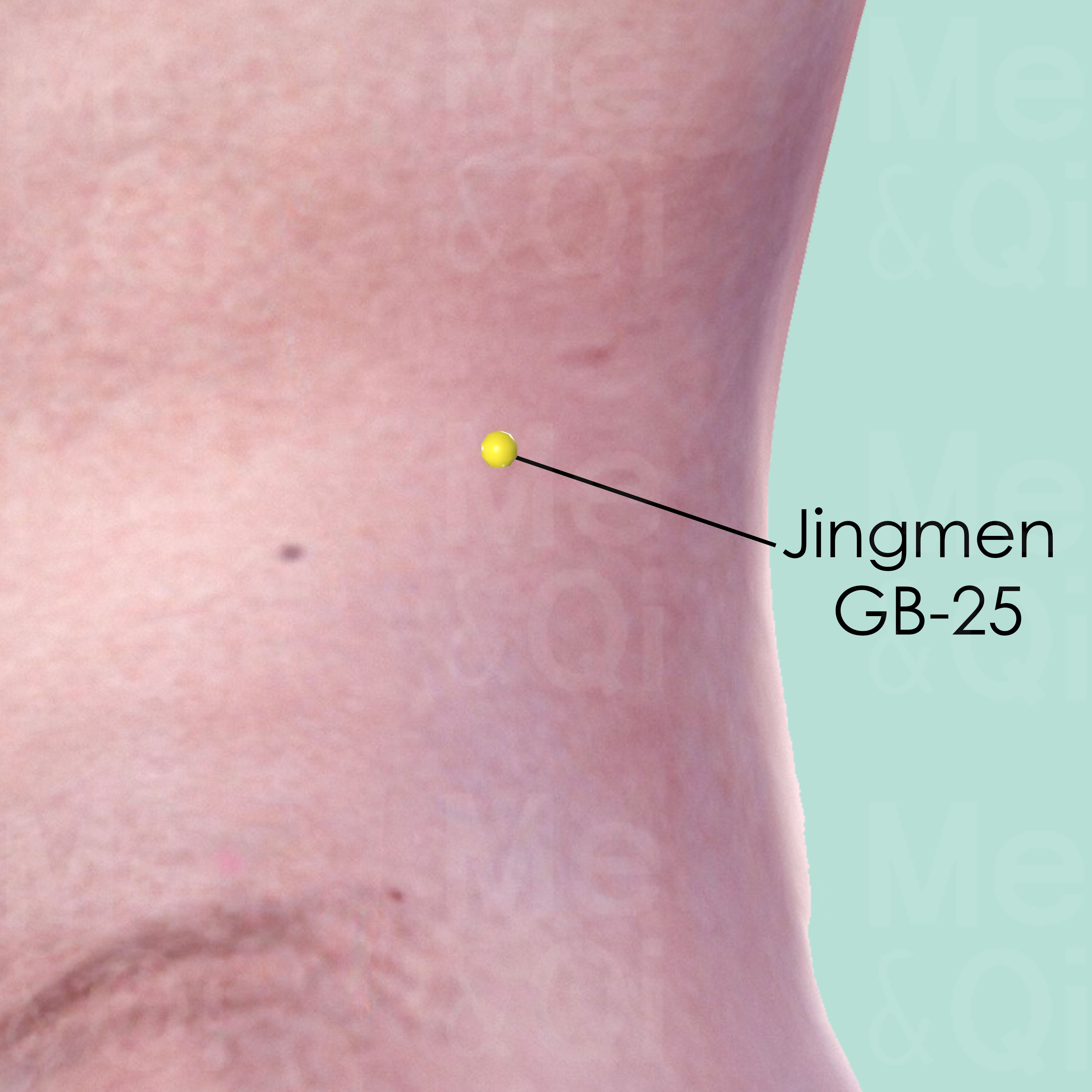
Jingmen GB-25
On the lateral side of the abdomen, on the lower border of the free end of the 12th rib.
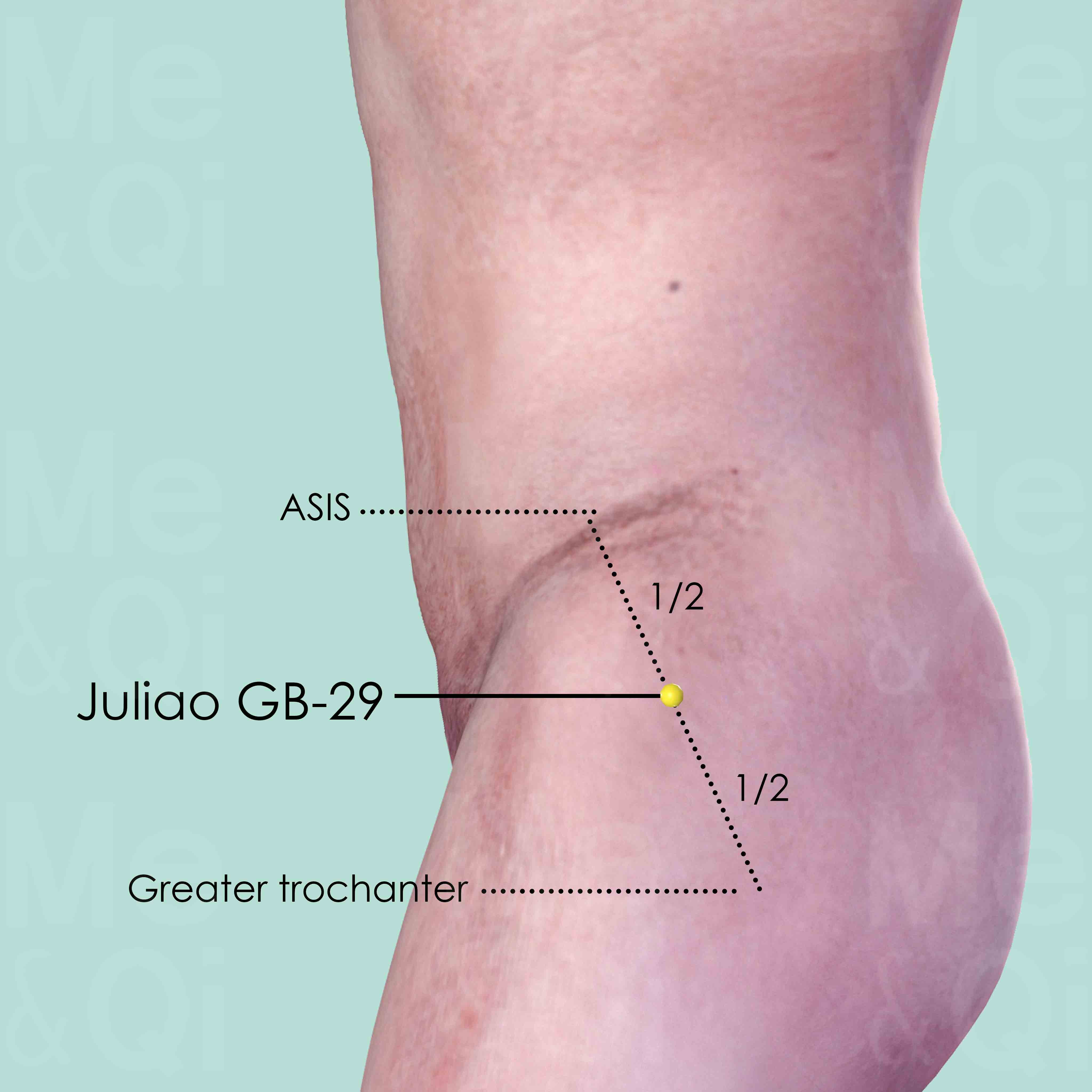
Juliao GB-29
Midway between the ASIS (anterior superior iliac spine) and the great trochanter, in the lateral recumbent position.
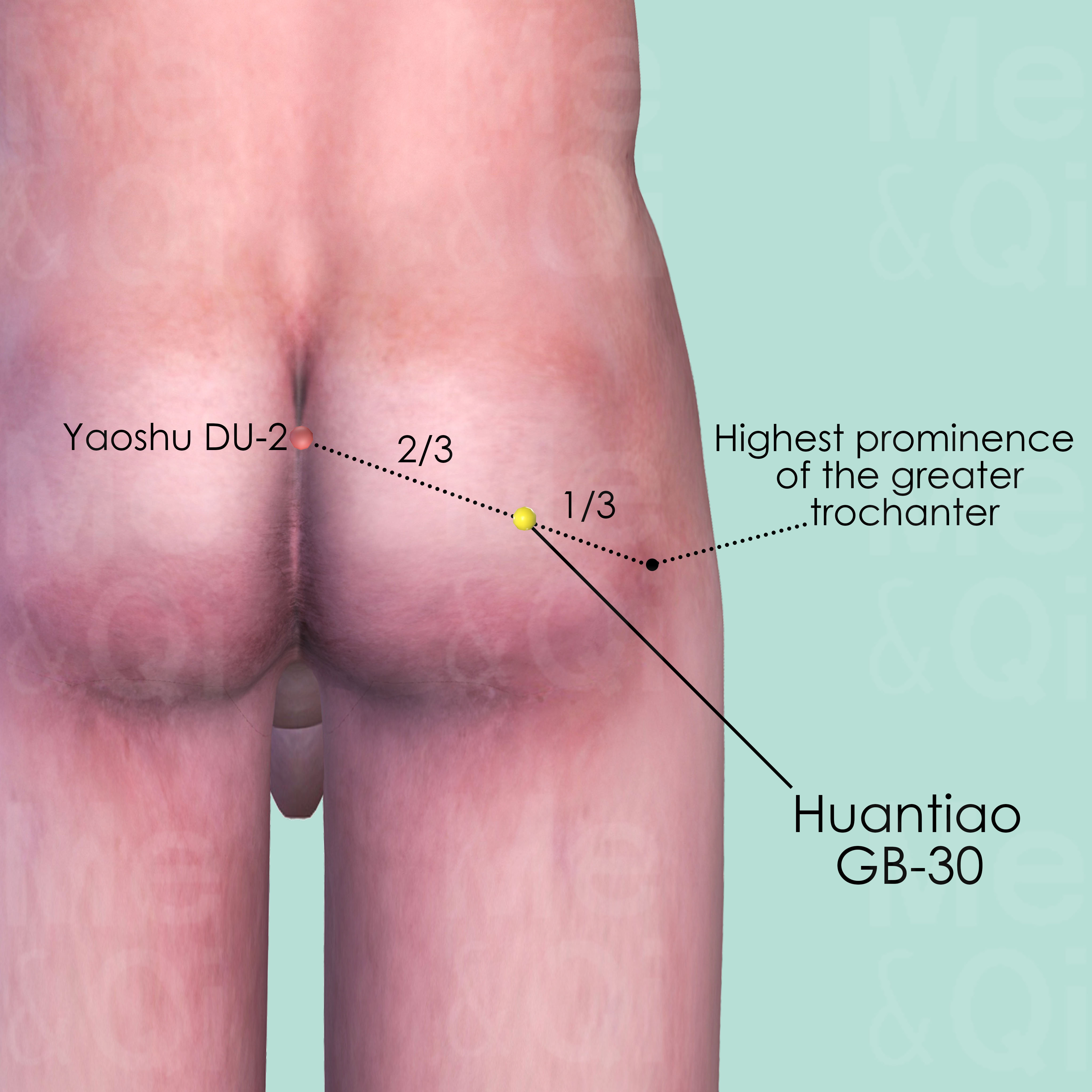
Huantiao GB-30
At the junction of the middle and lateral third of the distance between the great trochanter and Yaoshu DU-2 of the hiatus of the sacrum. When locating the point, put the patient in lateral recumbent position with the thigh flexed.
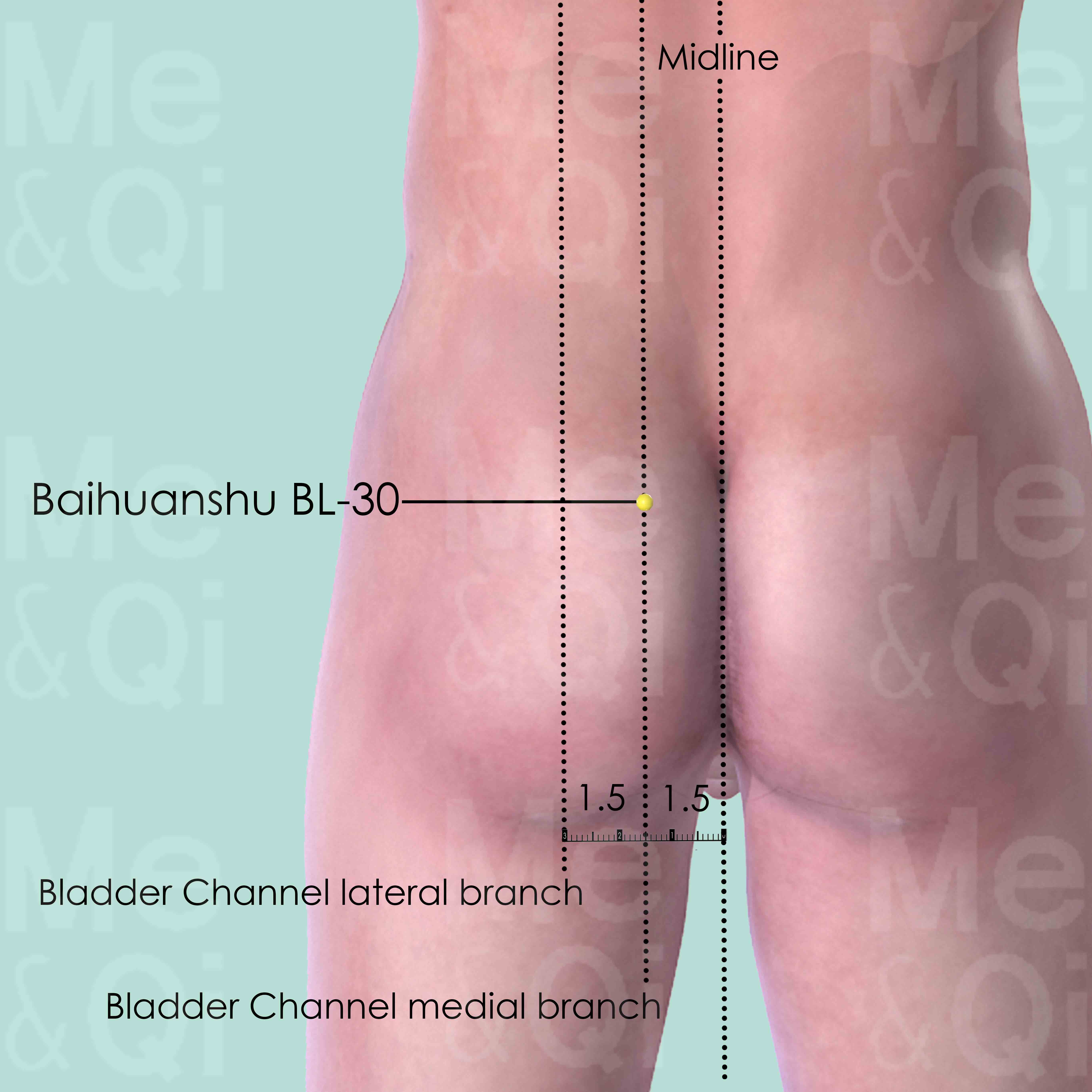
Baihuanshu BL-30
At the level of the 4th posterior sacral foramen, 1.5 cun lateral to the posterior midline.
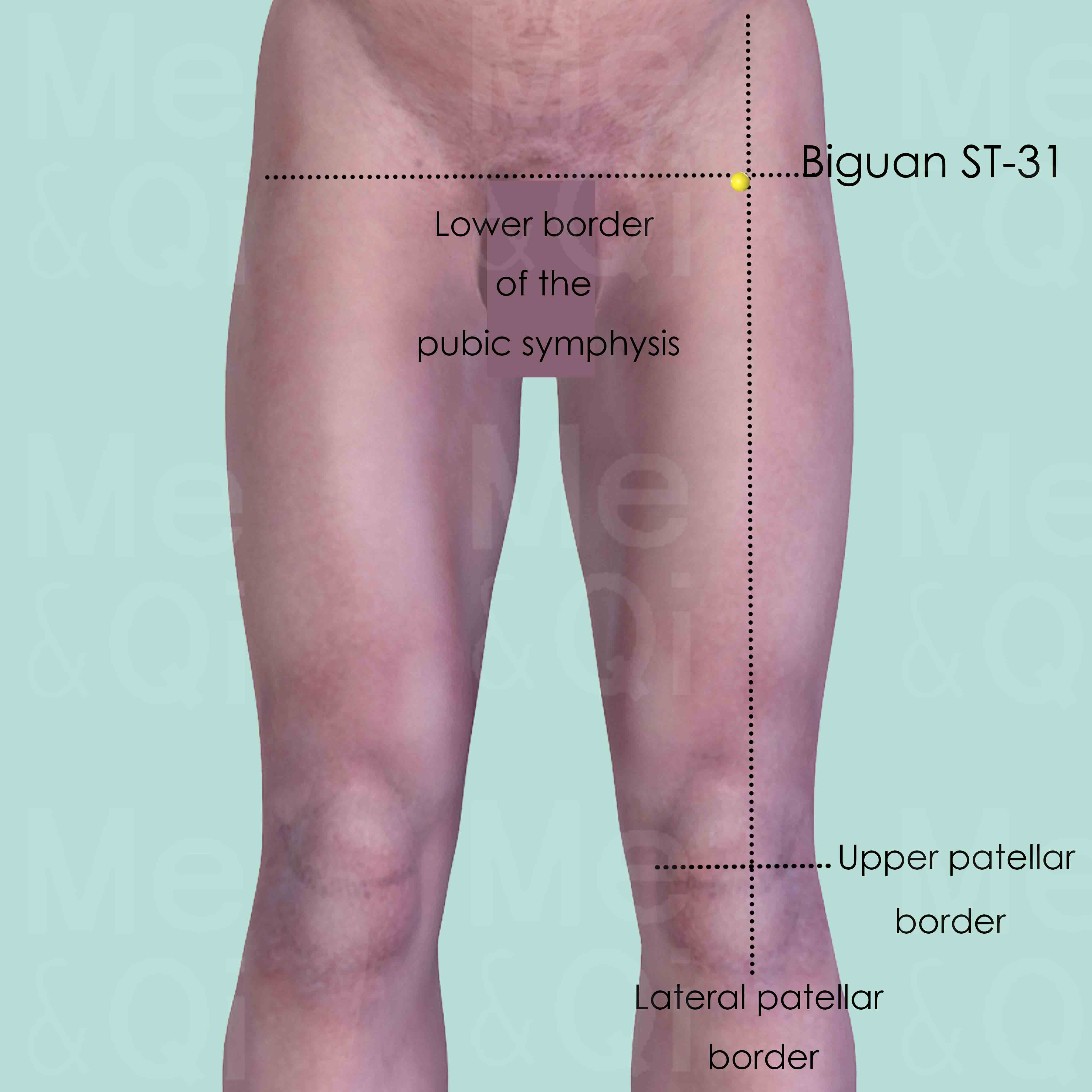
Biguan ST-31
Directly below the anterior superior iliac spine (ASIS), at the level of the lower border of the pubic symphysis, in the depression on the lateral side of sartorius muscle when the thigh is flex.
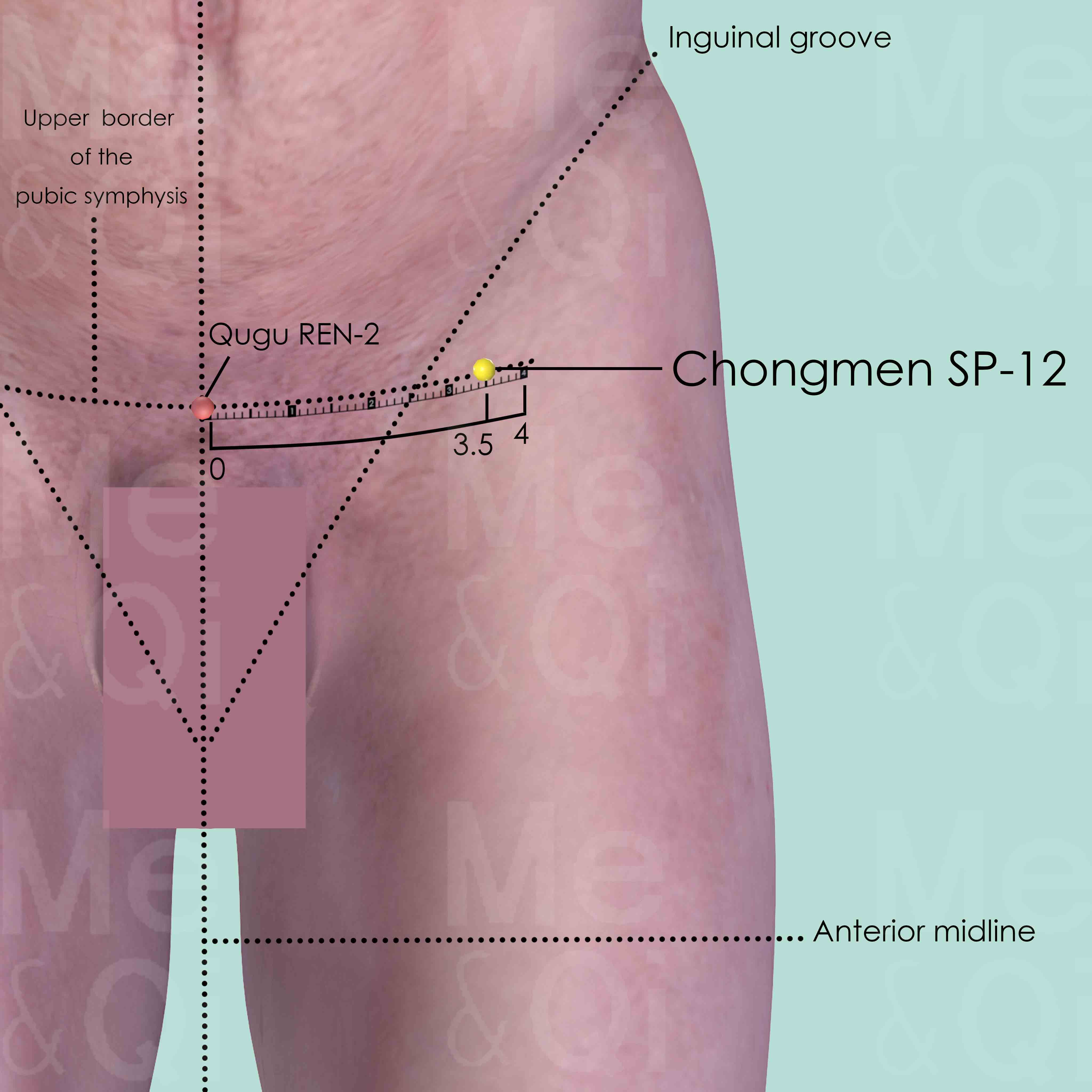
Chongmen SP-12
Lateral to the inguinal groove, on the immediate lateral side of the femoral artery, at the level of the upper border of symphysis pubis, 3.5 cun lateral to Qugu REN-2.

